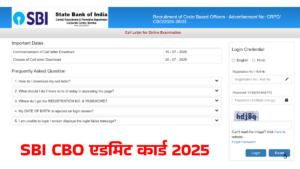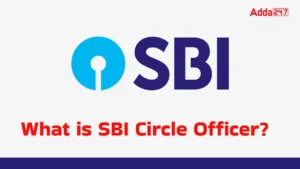Directions (1-5): Read the following passage carefully and answer the questions given below it. Certain words are given in bold to help you locate them while answering some of the questions.
Paragraph 1: Ancient money lending systems used to serve a limited area, but current banking systems has gone global. Now resource mobilization happens not only in an economy but also beyond political borders. Obviously, degree of integration differs from country to country, as attested by after-effects of Global Financial crisis of 2008. Different persons in an economy have different risk appetite or capacity to take risk. But at same time, most important concept of finance is direct relation of risk and return/profit. More is the risk, more is the profit. Banking system facilitates movement of money from risk-averse people to risk ready ones.
Paragraph 2: Surplus money you have can be (among many other things) invested in Stock markets or deposited in banks. Banks guarantee repayment of whole sum along with pre-agreed interest, so there is high degree of certainty and assurance to the depositor. In contrast, Stock exchanges provide no such assurances; person may not be able to recover even his invested money. So risk-averse person will prefer bank over, stock markets, private business or any other riskier investment. This is a hypothetical scenario.
Paragraph 3: On the other hand, many people who have some knowledge for what else to do of money are ready to invest, but they don’t have money. These will borrow same money which was just deposited by risk-averse people. So bank ensures its lending to these (so-called) risk ready people by adequate risk assessment, mortgages or hypothecation.
Paragraph 4: In Risk assessment, bank studies financial capacity and credibility of potential borrower. For this, it goes into matters like his annual income, past credit history, etc. Term loans are disbursed by keeping some physical property of borrower mortgage. Under mortgage bank keeps documents of such property on understanding that those will be returned, on repayment of loan. Loan agreement includes a clause in which borrower authorize bank to sell property on inability of borrower to repay such money. In case loan is given against a financial asset such as shares or Debentures, it is called ‘Hypothecation’ (not mortgage).
Paragraph 5: In the initial phases of economic development, banks are main means of resource mobilization in an economy. On same lines, this is case currently with India. This is because majority people in such economies are too risk-averse. New firms in developing economies find it difficult to raise much money through capital markets and consequently, they naturally go to banks for loans. As Indian economy is expanding, capital markets are getting stronger year by year. This makes banking industry a most important backbone of Indian economy.
Q1. Why according to the author the direct relationship between risk and return is the most important concept of finance as mentioned in the Paragraph 1?
(I)The mindset of people in corporate world is so conservative that all they care about is only profit and earning greater return on their investment.
(II)To earn a greater profit on investment, risk plays a critical role in it and thus with more risk, there is an equal opportunity of getting better return.
(III)In the financial market, risk decides the future prospects of growth of the market as wealth maximization is one of the most important features of any market.
(a)Only (II) is correct
(b)Only (III) is correct
(c)Both (I) and (II) are correct
(d)Both (II) and (III) are correct
(e)All are correct
Q2. Which of the following statements cannot be related to Paragraph 2?
(I)Banks provide a higher degree of certitude to the depositor in comparison to Stock market.
(II)There is a greater number of risk-averse people in the market who generally prefer bank over stock markets, private business or any other riskier investment.
(III)The preference of bank as a safer investment institute over others is some kind of hypothetical scenario.
(a)Only (I)
(b)Only (III)
(c)Both (I) and (II)
(d)Both (I) and (III)
(e)All three can be related
Q3. What does author mean by “many people who have some knowledge for what else to do of money are ready to invest, but they don’t have money” as mentioned in the Paragraph 3?
(a)There are many people who are risk lovers but they don’t get ample opportunity to invest in proper market.
(b)There are people with good knowledge of money market but they don’t have considerable money to invest, they get the financial support from banks to carry out their needs.
(c)Those who don’t have money should consider banks as their best option to invest.
(d)There are very few rich people in the market who carry out the task of risk lovers by investing in the stock market or certain institutions that provide a good return.
(e)None of the above.
Q4. How according to the passage, “Hypothecation” is different from “Mortgage” in the banking system?
(I)In the case of Hypothecation, it is used for creating charge against the security of movable assets like car/vehicle loans, shares, debentures etc., while Mortgage is used for creating charge against immovable property like land, buildings, etc.
(II) In the case of hypothecation, the possession of the asset remains with the borrower, while in the case of a mortgage, the ownership is usually with the borrower but may not always be the case.
(III) The amount of loan given against mortgage is always higher than the amount of loan given just for hypothecation.
(a)Only (I) is true
(b)Both (I) and (III) are true
(c)Both (I) and (II) are true
(d)Both (II) and (III) are true
(e)All are true
Q5. Which of the following sentences does not agree with the statement, “This makes banking industry a most important backbone of Indian economy”?
(a)Banks provide the much-needed help to the new firms in the market by raising the required loans to set them up in the existing economy.
(b)Banks play the central role in economic development of the country as they are the major means of resource mobilization in the economy.
(c)Banks provide the sense of security and assurance to many people as they help depositors in securing their surplus amount along with sufficient return in the form of interest generated on the amount.
(d)Banks are the major source of credit to the government.
(e)None of the above.
Q6. Choose the word/group of words which is most SIMILAR in meaning to the word/group of words printed in bold as used in the passage.
Credibility
(a)Mastery
(b)Finesse
(c)Plausibility
(d)Presumption
(e)Acuity
Q7. Choose the word/group of words which is most SIMILAR in meaning to the word/group of words printed in bold as used in the passage.
Mobilization
(a)Selection
(b)Manoeuvre
(c)Vitality
(d)Spirit
(e)Recoil
Q8. Choose the word/group of words which is most OPPOSITE in meaning to the word/group of words printed in bold as used in the passage.
Appetite
(a)Apathy
(b)Propensity
(c)Longing
(d)Voracity
(e)Bias
Directions (9-15): Read the following passage carefully and answer the questions given below it.
With the Genetic Engineering Appraisal Committee, an Environment Ministry body that evaluates genetically modified crops, approving transgenic mustard for environmental release, a key hurdle remains before farmers can cultivate it: Environment Minister Anil Dave’s approval, under a procedure set down by the UPA government.
A GM or transgenic crop is a plant that has a novel combination of genetic material obtained through the use of modern biotechnology. For example, a GM crop can contain a gene(s) that has been artificially inserted instead of the plant acquiring it through pollination. The resulting plant is said to be “genetically modified” although, in reality, all crops have been “genetically modified” from their original wild state by domestication, selection, and controlled breeding over long periods of time. The advantages of GM crops: Higher crop yields, Reduced farm costs, Increased farm profit, Improvement in health and the environment.
The technology of genetic engineering is an evolving one and there is much, especially on its impact on human health and environment, that is yet to be understood properly. The scientific community itself seems uncertain about this. While there are many in this community who feel that the benefits outweigh the risks, others point to the irreversibility of this technology and uncontrollability of the Genetically Modified Organisms (GMO) once introduced in the ecosystem. Many important crops like rice, brinjal, and mustard, among others, originated here, and introducing genetically modified versions of these crops could be a major threat to the vast number of domestic and wild varieties of these crops. In fact, globally, there is a clear view that GM crops must not be introduced in centers of origin and diversity. India also has mega biodiversity hotspots like the Eastern Himalayas and the Western Ghats which are rich in biodiversity yet ecologically very sensitive. Hence it will only be prudent for us to be careful before we jump on to the bandwagon of any technology. There is also a potential for pests to evolve resistance to the toxins produced by GM crops and the risk of these toxins affecting nontarget organisms. There is also the danger of unintentionally introducing allergens and other anti-nutrition factors in foods.
Currently, India has the world’s fourth-largest GM crop acreage on the strength of Bt cotton, the only genetically modified crop allowed in the country. The introduction of Bt cotton has been both highly successful and controversial. Cotton yield more than doubled in the first decade since its introduction in 2002. At the same time it was also shadowed by controversy, with a tangle of pricing and intellectual property rights (IPR) issues followed by government price interventions and litigation. An agreement to develop Bt brinjal was signed in 2005 between Mahyco—American agricultural biotech giant Monsanto’s Indian Bt cotton partner—and two Indian agricultural universities. Following the study of biosafety data and field trials by two expert committees, Bt brinjal was cleared for commercialization by India’s top biotech regulator, the Genetic Engineering Appraisal Committee, in 2009. But nothing came of it, with moratoriums imposed by then government following opposition from civil society groups and brinjal-growing states.
Few evidences show that though GM crops have been gaining acceptance their use still remains highly skewed. Only 29 countries allow commercial cultivation of GM crops while a similar number also allow their import. And most of the 170 million hectares under GM crops are in the USA, Brazil, Argentina, India, and China. Moreover 98% of GM cultivation falls under four main crops: soybean, maize, cotton, and canola. Experts also say that GM technologies will continue to focus on these crops for some time.
GM mustard (DMH-11) was developed by a team of scientists at Delhi University led by former vice-chancellor Deepak Pental under a government-funded project. It uses three genes from soil bacterium that makes self-pollinating plants such as mustard amenable to hybridization. This means local crop developers have the equivalent of a platform technology to more easily develop versions of mustard with custom traits such as higher oil content and pest resistance. It has also gone through safety and toxicity tests (on mice) prescribed by the regulator, but this is unlikely to convince opponents of GM technology.
Field trials in India, in which the State governments have a say, must ensure that there are sufficient safeguards against such violations. If GM food is allowed to be sold to consumers, they must have the right to know what they are buying, and labeling should be made mandatory. India has taken only halting steps towards establishing a strong regulatory system; the Biotechnology Regulatory Authority of India Bill, 2013, which provided for multi-level scientific assessments and an appellate tribunal, has lapsed. Hence, a strong regulatory authority should be established.
Farmers need technology, new knowledge, and governmental support to get the best out of their seeds. Successive governments have failed to move on the draft National Biotechnology Regulatory Bill, 2008 that would enable a biotechnology regulator to take shape. Without such legislation, issues to be decided on the basis of science will be at the mercy of political expediency.
Q9. According to the passage, what does the author mean by “genetically modified” crops?
(a) Modification of crops through domestication, selection, and controlled breeding.
(b) Artificial insertion of genes in the plant
(c) Fertilization of plants through transfer of pollen to the flower.
(d) Both (a) and (b) are true
(e) All are true
Q10. According to the passage, what concerns are associated with the transgenic crops?
(i) Lower yielding of the crops is the main concern associated with transgenic crops.
(ii) The risks of injecting the antigen in foods is the issue concerned with the transgenic crops.
(iii) It led to the danger of vast number of varieties of the crops.
(a) Only (i) is correct
(b) Only (ii) is correct
(c) Both (i) and (ii) are correct
(d) Both (ii) and (iii) are correct
(e) All are correct
Q11. According to the passage, why Bt mustard should be approved for release?
(i) As it makes self -pollinating plants compliant to hybridization.
(ii) As it is certified by the higher authorities.
(iii) As crop developers accede to grow limited versions of the mustard with custom traits.
(iv) As it has gone through safety and toxicity tests prescribed by the regulator.
(a) Only (iii) is correct
(b) (i), (ii) and (iv) are correct
(c) (i), (iii) and (iv) are correct
(d) (ii), (iii) and (iv) are correct
(e) All of the above statements are correct
Q12. According to the passage, what need to be ensured regarding the sale of GM foods?
(i) There must be proper implementation of policy by the government.
(ii) Safety and toxicity tests must be ensured.
(iii) The manufacturers should specify about the GM foods so that consumers must know what they are buying.
(a) Only (i) is correct
(b) Only (iii) is correct
(c) Both (i) and (iii) are correct
(d) Both (ii) and (iii) are correct
(e) All are correct
Q13. Which of the following is false in context of the passage?
(a) Eastern Himalayas and Western Ghats are rich in biodiversity but ecologically very sensitive.
(b) A transgenic crop makes the use of modern technology.
(c) Bt cotton in India has been both lucrative and contentious.
(d) Before going to any form of the technology, we must be heedless.
(e) All of the above statements are true.
Q14. Which of the following is the most appropriate title of the passage?
(a) GM crop and its benefits
(b) Be scientific
(c) Bt Mustard in India
(d) The Biotechnology Regulatory Authority of India Bill
(e) Transgenic Mustard Ratification
Q15. What does the author mean by “The introduction of Bt cotton has been successful and controversial in India”?
(a) Doubling of the cotton yield and disagreement regarding the price and IPR rights issues.
(b) Increase of the demand of cotton in India and shortage of supply.
(c) Enhanced country’s GDP and protest by opposing political parties regarding price and IPR rights issues.
(d) Both (b) and (c) are correct
(e) All are correct
Solutions
S1. Ans. (a)
Sol. Read the first paragraph carefully, “But at same time, most important concept of finance is direct relation of risk and return/profit. More is the risk, more is the profit.” Hence only statement (II) is correct in the context of the paragraph.
S2. Ans. (e)
Sol. Read the second paragraph carefully, all the three given statements can be connected with the paragraph. Hence (e) is the correct option.
S3. Ans. (b)
Sol. Read the third paragraph, the author clearly mentions the above statement in reference to the lack of money to those investors who are willing to take risks to earn larger profits. Hence (b) is the correct choice.
S4. Ans. (c)
Sol. Read the fourth paragraph carefully, it can be inferred from there that statements (I) and (II) are true in differentiating these two important banking terms while statement (III) is not mentioned in the paragraph. Hence (c) is the correct option.
S5. Ans. (e)
Sol. All the given statements agree with the statement as it can be easily inferred from the passage. Hence none of the statements disagrees to the statement in the context of the passage.
S6. Ans. (c)
Sol. Credibility means the quality of being convincing or believable. Plausibility means the quality of seeming reasonable or probable. Hence both are similar in meanings.
Finesse means impressive delicacy and skill.
Presumption means the acceptance of something as true although it is not known for certain.
Acuity means sharpness or keenness of thought, vision, or hearing.
S7. Ans. (b)
Sol. Mobilization means the action of making something movable or capable of movement. Manoeuvre means a movement or series of moves requiring skill and care. Hence both are similar in meanings.
Vitality means the state of being strong and active; energy.
Recoil means rebound or spring back through force of impact or elasticity.
S8. Ans. (a)
Sol. Appetite means a strong desire or liking for something. Apathy means lack of interest, enthusiasm, or concern. Hence both are opposite in meanings.
Propensity means an inclination or natural tendency to behave in a particular way.
Voracity means greediness.
Bias means inclination or prejudice for or against one person or group, especially in a way considered to be unfair.
S9. Ans. (d)
Sol. Refer to the second paragraph of the passage, “…..wild state by domestication, selection, and controlled breeding over long periods of time”, and “a GM crop can contain a gene(s) that has been artificially inserted instead of the plant acquiring it through pollination”. Hence both the statements (a) and (b) are true in context of the passage.
S10. Ans. (d)
Sol. Refer to the third paragraph, “Many important crops like rice, brinjal, and mustard, among others, originated here, and introducing genetically modified versions of these crops could be a major threat to the vast number of domestic and wild varieties of these crops.”, and “There is also the danger of unintentionally introducing allergens and other anti-nutrition factors in foods.” Hence both the statements (ii) and (iii) are correct.
S11. Ans. (c)
Sol. Refer to the fifth paragraph, “It uses three genes from soil bacterium that makes self-pollinating plants such as mustard amenable to hybridization.”, “It has also gone through safety and toxicity tests (on mice) prescribed by the regulator”, “This means local crop developers have the equivalent of a platform technology to more easily develop versions of mustard with custom traits such as higher oil content and pest resistance.” Hence statements (i), (iii) and (iv) are correct in context of the passage.
S12. Ans. (b)
Sol. Refer to the second last paragraph, “If GM food is allowed to be sold to consumers, they must have the right to know what they are buying, and labeling should be made mandatory.” Hence sentence (iii) is true.
S13. Ans. (d)
Sol. Refer to the last few lines of third paragraph, “Hence it will only be prudent for us to be careful before we jump on to the bandwagon of any technology.” Hence sentence (d) is false.
S14. Ans. (b)
Sol. “Be scientific” is the most appropriate title of the passage as the author mentions here the scientific ways (genetically modified) of growing crops.
S15. Ans. (a)
Sol. Refer to the third sentence of fourth paragraph, “Cotton yield more than doubled in the first decade since its introduction in 2002. At the same time, it was also shadowed by controversy, with a tangle of pricing and intellectual property rights (IPR) issues followed by government price interventions and litigation”.





 10th July Daily Current Affairs 2025: सभ...
10th July Daily Current Affairs 2025: सभ...
 SBI Bank CBO Exam Admit Card OUT for 296...
SBI Bank CBO Exam Admit Card OUT for 296...
 Full Form of SBI CBO: जानें क्या है सर्क...
Full Form of SBI CBO: जानें क्या है सर्क...

